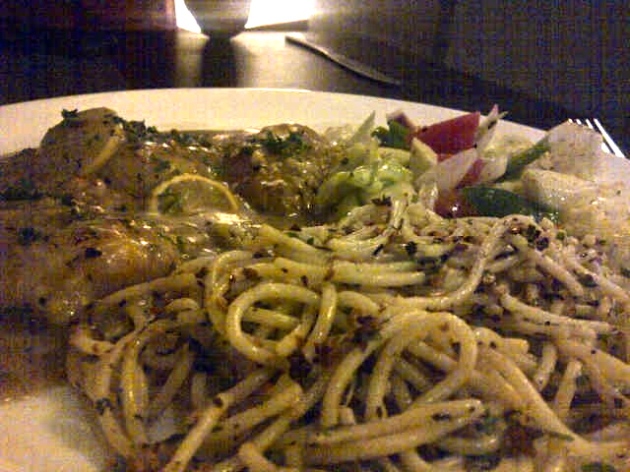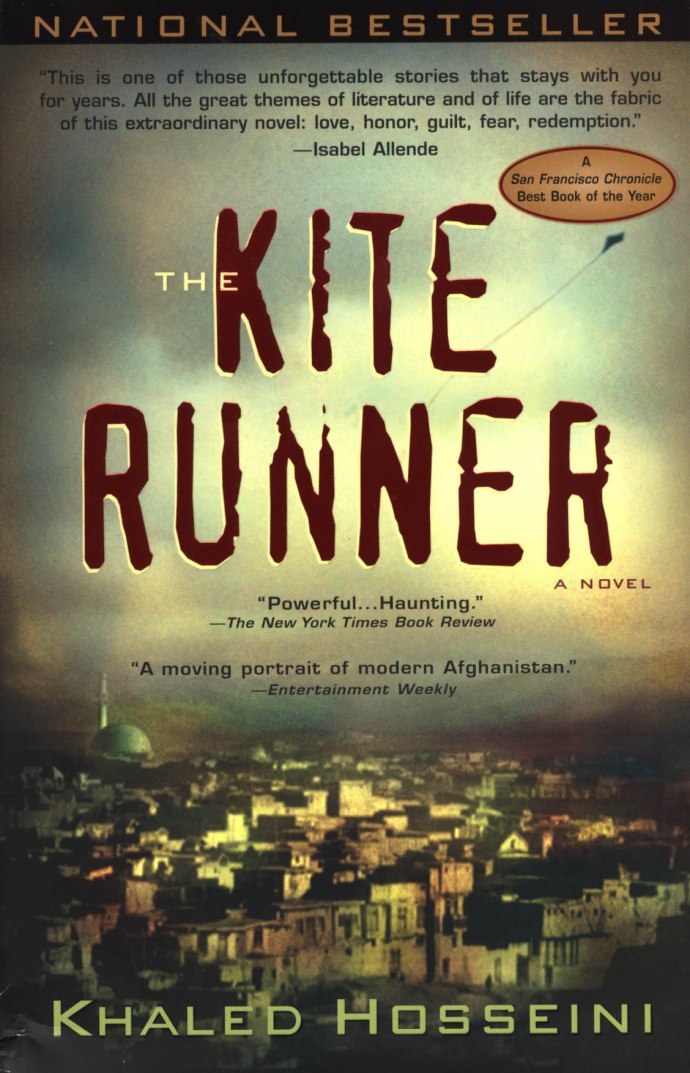I eat at Kemps Corner a lot. My only excuse is that it can quite literally be considered student budget heaven. And with that confession out of the way, I’m going to proceed to write about Tulips, which is just another pseudo – italian restaurant, looking to find its place in town.
The thing with Tulips is that they love their herbs; be it basil, cilantro or thyme – they’ve got it covered.
These are the dishes I ordered:
Basa fillet(s) in Cilantro and Lime

This dish was actually rather decent. The overpowering flavour of cilantro wasn’t a put off as much as it was slightly unfortunate. The Basa fillets however, were cooked to perfection. I’m talking melt in the mouth perfection. The herbed (surprise, surprise!) spaghetti was a pleasant addition. It was light and well seasoned – A little too much pepper though, but who am I to talk? I ordered steak in pepper sauce. But more on that tragedy later. What I found interesting about the combination of the fish and the pasta was that individually, they were both alright (and this may or may not be the north Indian in me who likes to mix everything on the plate talking), but together, they made a pretty good team. One that I’m not going to complain about too much. Then there was the stereotypical side salad, with diced onions, cucumber and bell peppers in lime, salt and pepper. It went pretty well with everything. I won’t lie. Even if it was just a clever tactic to cover up the empty edge of the plate because the pale whiteness of it was just too depressing for them to be able to present to their customers who had been waiting for a good half an hour for the plate to show up in the first place. I could swear I developed a mild case of whiplash that day, from turning over and looking at the waiter every few minutes with a desperately hungry expression on my face. Borderline ‘Pussin Boots.’
On a scale of 1 to 5, I would give this dish a 3, which is honestly based more on the quantity. I was happy once I had eaten though, simply because I was extremely hungry at the time and the dish served my purpose in that respect. However, the fact that the fish was cooked so wonderfully, that being the highlight of the plate, earns it a few extra brownie points.
Tenderloin Steak in Pepper sauce

This is where things went beyond wrong. The steak was actually a recommendation by a friend.The sauce was supposed to be delicious, which was interesting for me, since I’m not really one to like anything that’s too peppery. This time, however, my “medium rare” steak was burnt – Not just around the edges, but more along the lines of “left it on the grill and decided to take a break” burnt. The side salad? Great. The fries? Even better! But the meat?! What a mess! On being questioned, the only words the stunned attendant could manage to conjure were, “Ma’am, you said medium rare.” So I figured, arguing wasn’t going to help me here. I must confess, if you haven’t figured already, I’m a complete carnivore, so I like my meat sightly undercooked. Especially when it comesto steak, that partially raw centre is where all the flavour lies. So if you’re going to over cook my meat, you might as well do it right and try not to burn it or leave it crunchy enough for me to taste nothing but the char on its curled up edges. On a scale of 1 to 5? I’d say it earns about a 1 – and thats for the fries and the salad. As far as the sauce goes, well let’s just say it could have been better and leave it at that. In fact, let’s just move past the steak and talk about dessert instead.
Chocolate covered Strawberries

The dessert selection at Tulips was quite intriguing, really. There was an array of pies, pastries and tarts to choose from (The apple pie looked particularly scrumptious), but being a strawberry lover on a student budget, I chose this little dynamite for 25 rupees a pop. Smooth chocolate, fresh strawberries, no complaints. It was pretty great.
So overall, here’s what I learnt:
- Tulips didn’t really make a spectacular impression on me, personally.
- I’d say drop by once and experience it for yourself, if you like your food overpowered by herbs.
- Plating is not their forte.
Pallavi Mathur
M11032








